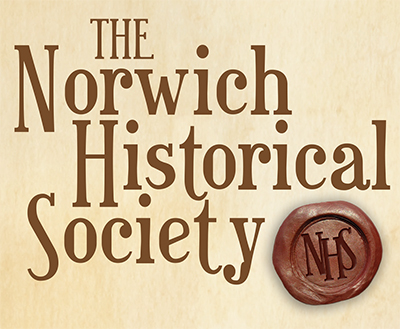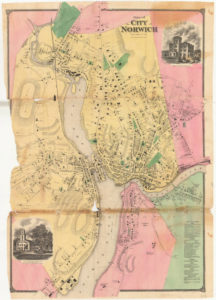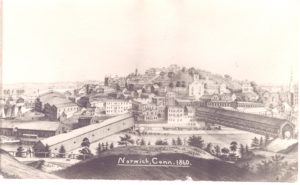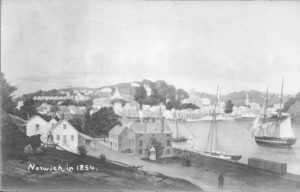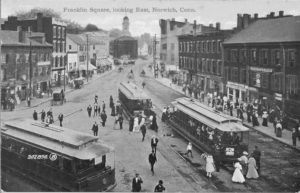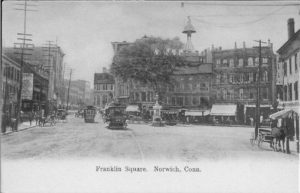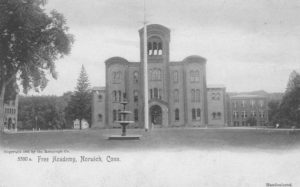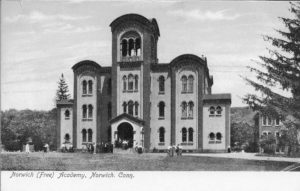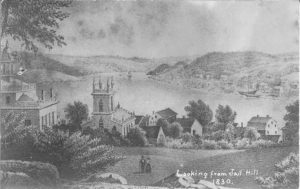The Norwich Historical Society developed a series of virtual experiences for adults and resources for teachers interested in teaching local history.
VIRTUAL EXPERIENCES
The Norwich Historical Society created several virtual tours based off our annual guided Second Saturday (June– August) and Walktober (September – October) tours for everyone to enjoy. These experiences are geared mostly for adults but are kid friendly. If you’d like to check out more virtual tour options, please visit walknorwich.org to explore the self-guided Walk Norwich Trail System.
LESSON PLAN
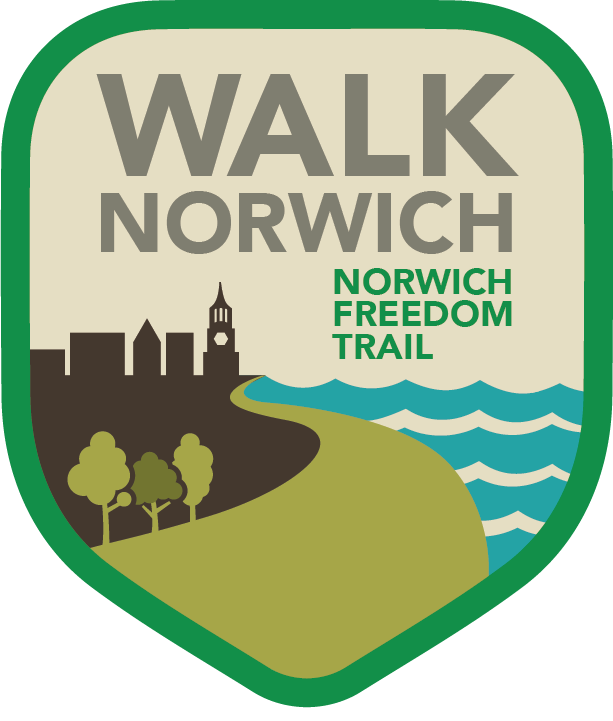 In partnership with the Norwich Public Schools Social Studies Coordinator and the Norwich NAACP Branch, the Norwich Historical Society created a lesson plan for teachers teaching 8th grade. The lesson plan will explore how Norwich can be seen as a microhistory of larger national themes like slavery and abolition. The lesson plan uses local history to connect to national events and will focus on content from the Norwich Freedom Trail. The lesson plan can be used as a single lesson or incorporated into a multi-day lesson as time allows.
In partnership with the Norwich Public Schools Social Studies Coordinator and the Norwich NAACP Branch, the Norwich Historical Society created a lesson plan for teachers teaching 8th grade. The lesson plan will explore how Norwich can be seen as a microhistory of larger national themes like slavery and abolition. The lesson plan uses local history to connect to national events and will focus on content from the Norwich Freedom Trail. The lesson plan can be used as a single lesson or incorporated into a multi-day lesson as time allows.
The Norwich Freedom Trail is a part of the Walk Norwich Trail system and celebrates Norwich’s rich and diverse story of African-American heritage, highlighting notable people who played important roles in the movement to end slavery and advance civil rights before and after the United States Civil War. The Norwich Freedom Trail has 18 stops in total, but our lesson plan will take a narrow approach and focus only on key stories and sites specifically related to James L. Smith. Born on a Virginia plantation, Smith escaped slavery in 1838 with the help of Norwich’s David Ruggles, a conductor on the Underground Railroad in New York City. Smith ultimately relocated to Norwich and bought a house in Norwich and worked as a shoemaker. We chose to gear our lesson plans towards eighth grade students because they are currently studying U.S. History in the classroom, however, there is a potential to create more lesson plans geared towards elementary aged students in the future.
LESSON PLAN DESCRIPTION
James L. Smith: from Freedom Seeker to Businessowner
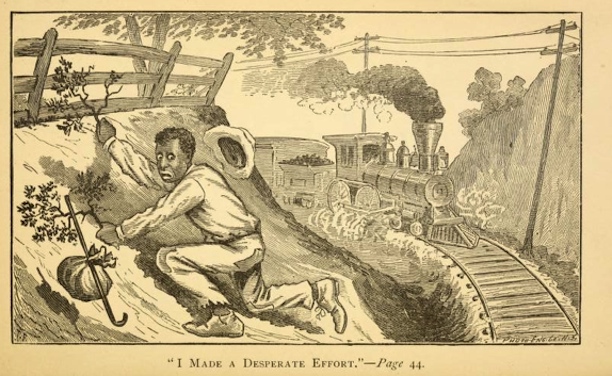 Students will understand the local significance of individuals such as James L. Smith and how his story fits into the larger discussions of African American history in the United States and how his example contributes to present-day conversations on race relations in America. By creating this lesson, our goal is to humanize these themes by focusing on a major local Norwich figure. The history of James L. Smith is multi-faceted and touches upon slavery, racial issues, education, political history, and the concept of achieving the “American Dream.” This presents a unique and worthy opportunity of educating students on a powerful and inspirational example of how a freedom seeker came to find a new life in Norwich, CT.
Students will understand the local significance of individuals such as James L. Smith and how his story fits into the larger discussions of African American history in the United States and how his example contributes to present-day conversations on race relations in America. By creating this lesson, our goal is to humanize these themes by focusing on a major local Norwich figure. The history of James L. Smith is multi-faceted and touches upon slavery, racial issues, education, political history, and the concept of achieving the “American Dream.” This presents a unique and worthy opportunity of educating students on a powerful and inspirational example of how a freedom seeker came to find a new life in Norwich, CT.
The usage of James L. Smith’s autobiography adds further depth to this lesson and we also intend to educate students on the value of primary resources and the value of written history from the first perspective. Because of this, the story of James L. Smith will be further humanized to where students can understand his own feelings, fears, desires, and aspirations as described in his own words. Students will also learn how autobiographies such as his are not simply written for the author’s own satisfaction but written to inspire others to have conversations about how American society can be further improved upon.
This project was generously funded by CT Humanities, Chelsea Groton Bank Foundation, and the Chamber of Commerce of Eastern Connecticut Foundation.



 Walk Norwich
Walk Norwich